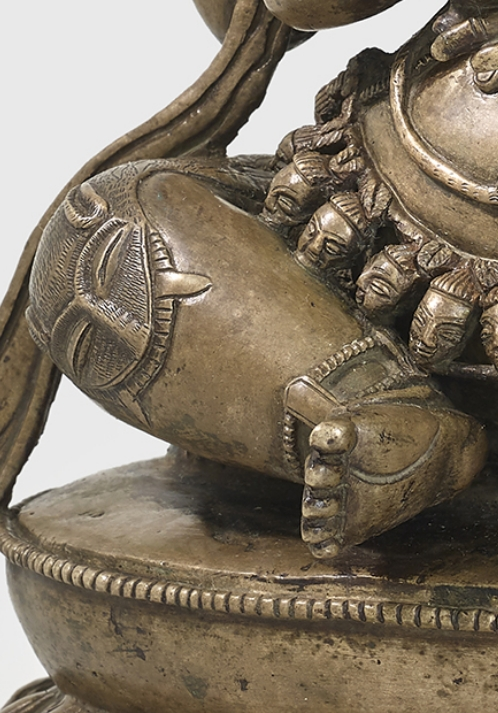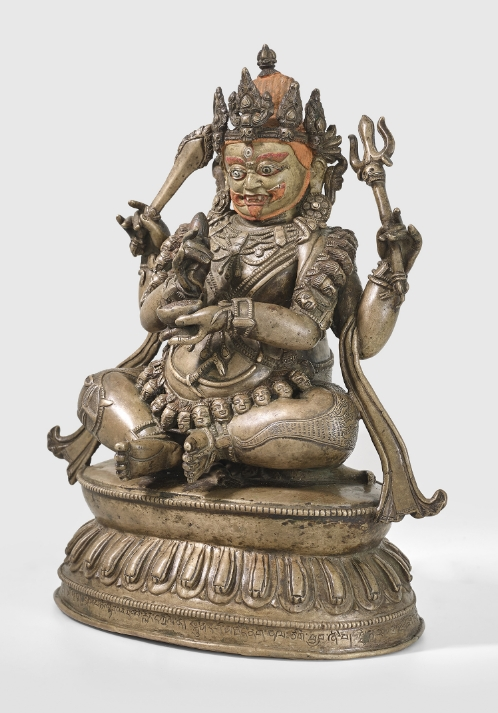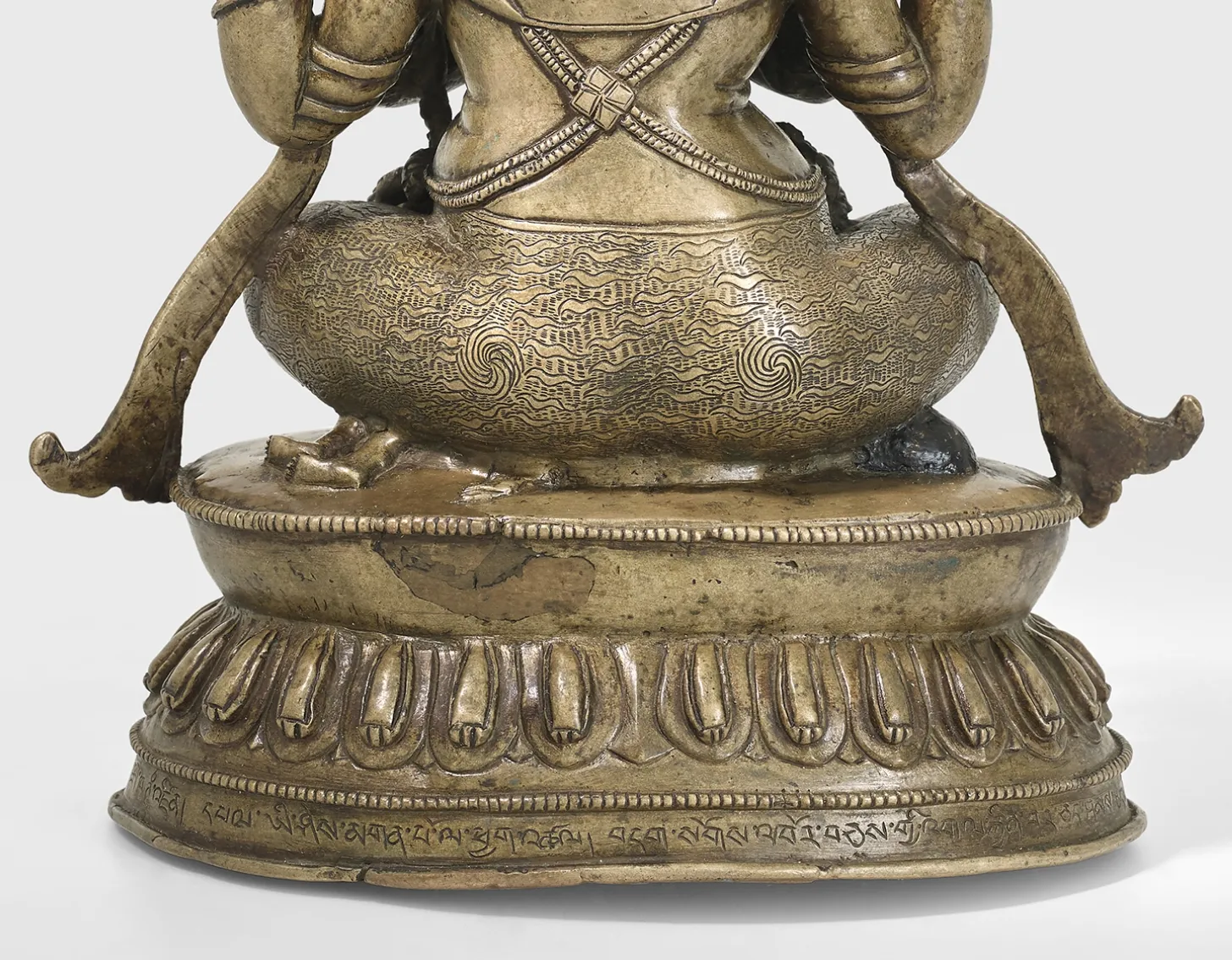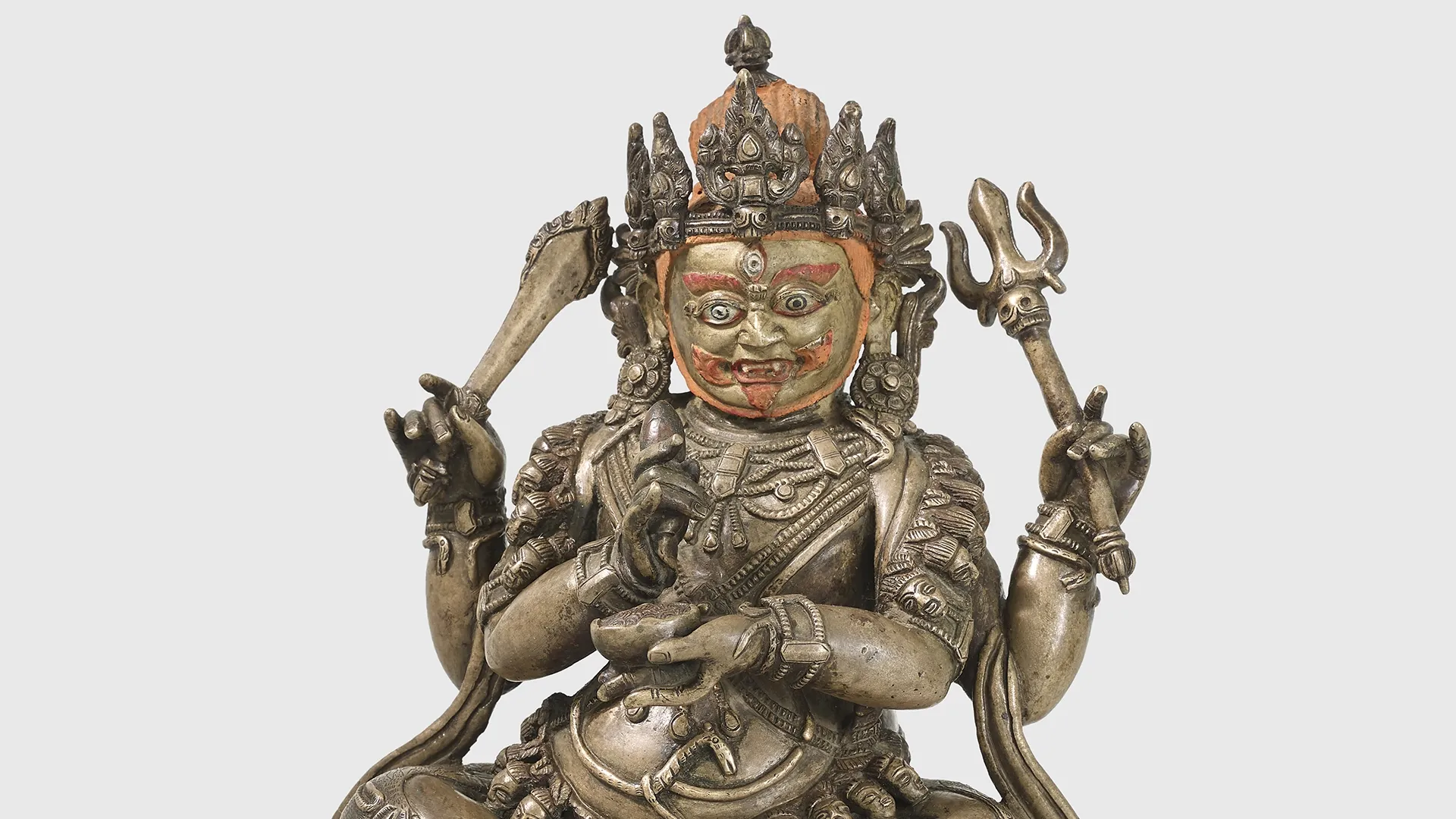Two images in the collection represent different aspects of Mahakala “Great (Lord of) Death” or “Great (Lord of) Time”. In India, Mahakala was associated with cremation grounds, an environment reflected in his gruesome iconography.
The corpulent god holds a skullcup filled with blood and a human heart in his primary hands, and the skull trident and flaming sword in his upper hands (cat. no. 16). A garland of freshly severed skulls drapes over his shoulders and falls to the thighs, and a serpent winds around his abdomen, another in his hair (cat. no. 16.1). A tiger skin cloaks his hips, the tiger’s open jaw positioned on the right knee (cat. no. 16.2) so as to suggest it is being devoured.


This form of Mahakala is said to be especially popular within the Kagyu and Nyingma orders. The face is particularly visible as it is painted gold with fierce, blood-shot eyes. Hair, beard, eyebrows, and fangs are orange or blood red. Related examples can be found in the Musée Guimet, and a private Belgian collection. An inscription along the lower base pays homage to this deity under his appellation Jnananatha (ye shes mkhan po), “Wise Preceptor”, and offers prayers that his powers pacify all obstacles.

